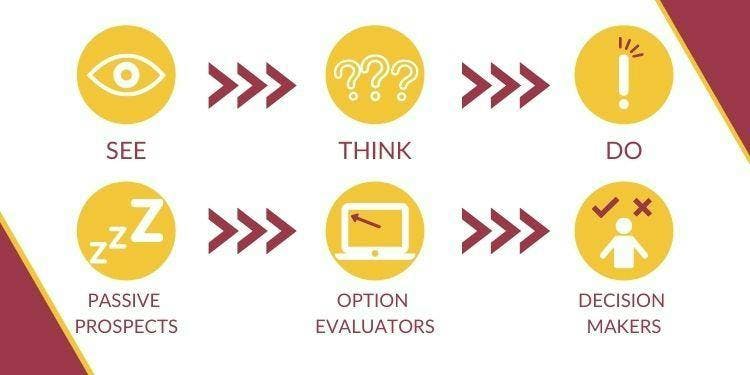Blogging gives your business the chance to demonstrate thought leadership and helps convey your brand’s personality, which is great for building trust and encouraging people to use your services without directly ‘selling’ to them. Blogging can also be useful for:
- helping people find your website;
- driving traffic to the site;
- encouraging links to support SEO; and
- providing content to improve social media presence.
According to Hubspot’s most recent marketing report, blogs are among “the primary three forms of media use in content strategies” with 86% of companies producing blog content compared to other formats.
These days, most brands have a blog, meaning there is more competition than ever. Combine that with the fact that web users have a short attention span and it is clear you have got to work hard to get people to actually click on and read your content.
Why should people click on your blog, especially if there are lots of other blog posts on a similar topic? The trick is to try and ensure your content is unique and gives users value - whether it is an idea, information or a take on a topical story. The needs and interests of your target audience should be at the forefront of your mind when coming up with ideas that can be used to maximise the potential of your blog.
Remember, it is about them and not you.
See | Think | Do
The beauty of blogging (and content in general) is that you can target not just different audiences, but different audiences at different stages of the buying cycle. This is something that many businesses fail to recognise and capitalise on.
At I-COM, we often talk about a marketing framework called See | Think | Do. This framework is an alternative view of the traditional purchase funnel and aims to take the largest possible view of a brand’s potential audience. It seeks to ensure that a brand is doing everything it can to add new potential clients/customers into the purchase funnel, nurture new leads, and persuade and convert them into actual customers.

For example, if you are only targeting ‘think’ and ‘do’, you are effectively ignoring a whole third of your potential audience, which you need in order to grow your business.
By targeting the ‘see’ audience, you can increase brand awareness, improve brand perception and get people interested in you even if they do not need your products/services yet. The hope is that when they do, they will come to you because they have noticed/engaged with you in the past and, therefore, have a good impression of your business.
By targeting the ‘think’ audience, you can persuade people who are typically in the research and comparison phase. This means that when they do decide to enquire about a service or buy a product, they should do so with you rather than a competitor.
Finally, by targeting the ‘do’ audience, you can convert people who are at the final stage as quickly as possible - this is usually done by a website’s service or product pages.
A brand will struggle to grow if it is not effectively doing all three:
- Don’t target ‘see’ and you will struggle to get new, unique visitors and potential clients
- Don’t target ‘think’ and your competitors will take your business
- Don’t target ‘do’ and people will not go through with their intended desire to use your services or buy your products
| What you should be doing | What you shouldn't be doing |
|---|---|
| Write blog posts with a minimum of 300 words | Optimise blog posts for specific keywords that you are already targeting on service/product pages |
| Post regularly - once a week as a minimum - search engines typically favour active blogs | Covering queries directly related to a service or product to avoid blog posts competing with service pages (i.e. cannibalisation) |
| Include links to articles and other resources mentioned in blog posts | Writing in technical language that a layman audience will not understand |
| Write blog posts with a specific target audience in mind to avoid competing with other generic posts and ensure you have a chance of being optimised for long-tail keywords | Talking about yourself too much, visitors are looking for information that will help them and are not interested in how good you are, yet |
| Engage with published posts by sharing them on social media, engaging with other professionals and prospective clients on forums and in online groups | Putting out dull content. Every post should enhance the reputation of your business, which means ensuring content is relevant, presentable and digestible |
| Provide links to other relevant blog posts and pages on your website | Write long blocks of text as this won't engage the reader. Make the blog easy to digest with short paragraphs, subheadings, images and other content forms |
| Use imagery and videos where appropriate to increase engagement with visitors | Write a post for the sake of it, make sure your content provides value to the user - research beforehand |
Techniques for Coming Up With Blog Post Ideas
Comment on the news
Content created around themes that are topical, current and newsworthy tends to be more shareable. A great way to do this is by adding further insight into existing news stories or released data.
What’s more, news stories are a great way of brainstorming new content - think about the topics people are currently talking about and how you could use and spin that topic to create content relevant to your business.
Answer common queries
A great tool to generate blog post topic ideas is Answer the Public. This site lets you type in a topic to generate a list of the most common questions asked in relation to that subject. You can then pick out questions that you can answer and write a relevant blog post. This ensures you are providing value and answering questions that people are actively searching for information on.
Explain complicated topics in simple terms
Providing audiences with a simple, clear explanation of technically-heavy subjects will help build trust with prospective clients/customers.
Emulate what other people are doing
You can learn a lot from seeing what works for other blogs and then putting your own unique spin on it.
Guest posts
Reaching out for advice from experts, for example, a spokesperson from a charity, on certain topics can help a brand for two reasons:
- It provides content for the blog without having to write it yourself
- It encourages the expert to promote their work on your site
Common queries made by existing clients/customers
Ask around the team to see if there are certain queries that often come up when helping clients/customers. You could turn these into blog posts so if anyone is looking for the answer, they will be able to find it before speaking to you.
Curate great content
Create a round-up of popular information and resources. Discuss how and why they are useful for your audience and provide a link. When curating content, choose popular or trending content to ‘piggyback’ off - that way you know it is well-liked and a good choice to include.
Take it a step further by mentioning the organisations you have included in the blog post on social media to encourage engagement and promotion of your post.
The importance of blogging for your business cannot be underestimated. Even with the emergence of new content marketing techniques, the value of what a blog can do for your brand does not diminish. Whatever your needs are, a blog is a great tool for creating a stream of website traffic, growing your audience and increasing new prospects.
If you’re interested in implementing an effective blog strategy or looking to improve your current blogging efforts, get in touch with I-COM today to find out how we can help you.
Need help with digital marketing? Get in touch!
I-COM Digital Marketing
With a large in-house team of specialists we provide a range of digital services including web design, web development, digital marketing, SEO, branding, content marketing, PR and outreach, social media marketing and paid search marketing, we cover every digital marketing need you may have.
Call us on 0161 402 3170 or use the contact form to get in touch.
